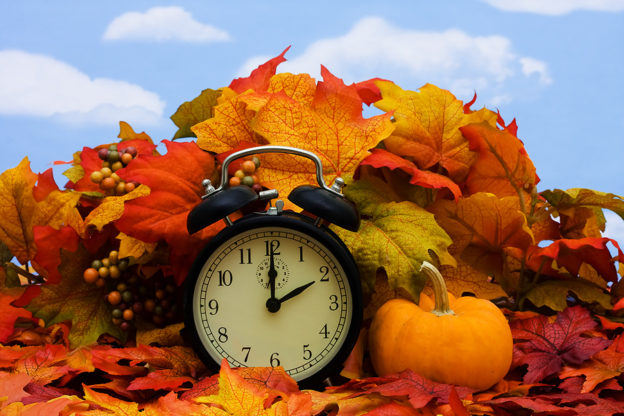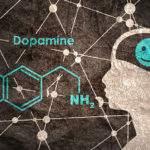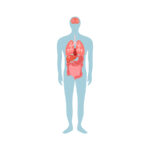By David Blyweiss, M.D., Advanced Natural Wellness
November 16, 2020
Just a few weeks ago, you probably switched your clocks back an hour for the fall. I say “probably” because there are a few regions of our country like Arizona and Hawaii who ignore this outdated tradition.
And for good reason! Daylight savings really needs to be changed. Switching the clocks twice each year actually causes some very real health problems.
First, let’s look back at why we change our clocks in the first place…
It started back in 1784 while Benjamin Franklin was serving as the US Ambassador to France. He jokingly suggested that we change the clocks as a way to replace hours of expensive candle use with free morning daylight.
What historians don’t often mention is that he was actually saying this as a “tongue in cheek” way to tease the lazy Frenchmen.[1]
Open your arteries, improve blood flow for a new health miracle...
Did you know your circulatory system has over 60,000 miles of arteries, veins and other blood vessels, if stretched end to end?
But as you age, your blood vessels undergo changes, which may cause them to stiffen, thicken and get clogged.
GOOD NEWS! Doctors have now identified a “Miracle Molecule” inside your arteries that helps OPEN your arteries and IMPROVE blood flow.
It’s what Dr. Valentin Fuster calls it, "One of the most important discoveries in the history of cardiovascular medicine."To you, that means...
- Healthy blood pressure
- Sharper mind and memory
- Skyrocketing energy and muscular strength
- Increased pleasure and passion in the bedroom
- Improved circulation to every cell and organ in your body
Go here to discover a new natural way to significantly boost the levels of this miracle molecule in YOUR body NOW!
This ridiculous notion was suggested again in 1895. An entomologist – aka an insect scientist – named George Hudson wanted more daylight hours to go bug hunting.
By the time World War I came around, the Germans really did decide to change their clocks to save energy. Other countries followed suit. And by 1918, the US official started changing their clocks twice a year – one hour back in the fall and one hour ahead in the spring.
Daylight Savings Time Doesn’t “Save” Anything
There are a few problems with this practice of changing the clocks twice each year. Classically, the Monday after clocks are turned back in the spring results in a higher risk of heart attack.
Studies have found the risk of having a heart attack on the Monday following a spring time switch increases by 25 percent compared to most Mondays in the year. Then, in fall, when we gain an hour of sleep, heart attack risk actually falls by about 21 percent. [2]
This happens because people who are already at risk for heart disease wake up after the clocks switch back extra tired. Their bodies are extra stressed. More heart attacks and strokes are the result.
Are You Suffering From...
- Love handles and a pot belly
- Romance that isn't what it used to
- Forgetfulness and inattention
- Low (or no) strength and endurance
- A sex drive that's shifted into neutral...or worse
If so...you may have Mature Male Burnout. Click here to discover more about this unique condition and what you can do about it.
Another study also found that the rates of car accidents in the spring go up when the time changes. Between the years 2002 and 2011, the transition to Daylight Savings Time (DST) caused over 30 deaths at a social cost of $275 million annually. This risk is mainly due to sleep deprivation in the spring.[3]
Protect Yourself from the Time Switch Each Year
So, until we change the law to a national standard time, you need to take actions to protect yourself from these time changes.
I suggest that you start preparing your body for the time switch at least one week in advance. Begin to change your sleep schedule by 10 to 15 minutes each day.
This way, if you’re going to spring forward and lose an hour, your body won’t be so shocked when you wake up that Monday morning ready for work. You’ll be ready to absorb that massive change of time.
The same thing goes with clocks “falling back.” Modify your sleep schedule by 10 to 15 minutes every day. Add in some meditation and mindful breathing in the morning to help your body stay at lower stress levels.
Besides adjusting your sleep times, some people may want to take melatonin to help them get a good night’s sleep. If you know you’re going to need to wake up earlier, melatonin may be able to help you regulate that sleep pattern.
That’s because melatonin can help correct circadian rhythm disruptions, improve sleep, and reduce daytime napping.[4]
Just make sure you’re taking the melatonin in plenty of time to work properly. If you are planning to go to bed at 10:00pm, you’ll want to take your dose between 7:30 and 8:30 pm. Then, turn your lights down, get off your screens, and let it work naturally.
Herbal teas are another option to help you sleep during this stressful time of year. I like a nice herbal organic chamomile tea to help me relax. Decaffeinated green tea or jasmine tea also work well.
And lastly, consider the foods you eat for dinner. Foods with tryptophan like organic honey roasted turkey may help you catch some zzz’s. It will also help your body make serotonin and keep your blood sugar stable.
All in all, these practices of easing your body into a time change may make some major differences in your health each year.
Sources:
[1] Handwerk, Brian, “The Strange and Surprising History of Daylight Saving Time” National Geographic. Available Online: https://www.nationalgeographic.com/news/2016/03/060309-daylight-saving-savings-time-nation-science-sunday/
[2] Pierson, Ransdell and Berkrot, Bill. “Daylight saving time linked to heart attacks: study”. Reuters. March 29, 2014. Available Online: https://www.reuters.com/article/us-heart-daylightsaving/daylight-saving-time-linked-to-heart-attacks-study-idUSBREA2S0D420140329
[3] Smith, Austin, C. 2016. “Spring Forward at Your Own Risk: Daylight Saving Time and Fatal Vehicle Crashes.” American Economic Journal: Applied Economics, 8 (2): 65-91.
[4] Skene, Debra J., and Josephine Arendt. “Circadian rhythm sleep disorders in the blind and their treatment with melatonin.” Sleep medicine 8.6 (2007): 651-655.







